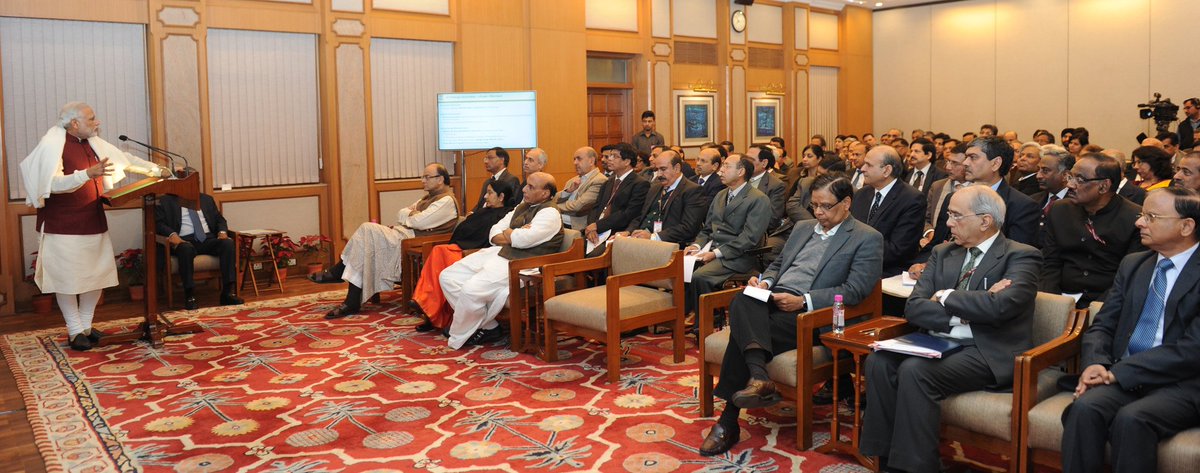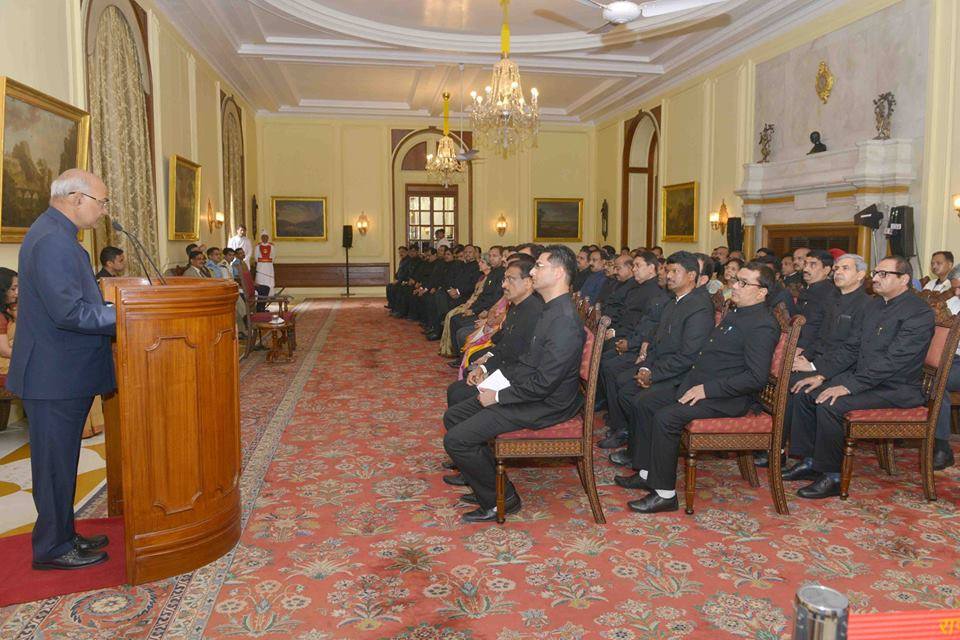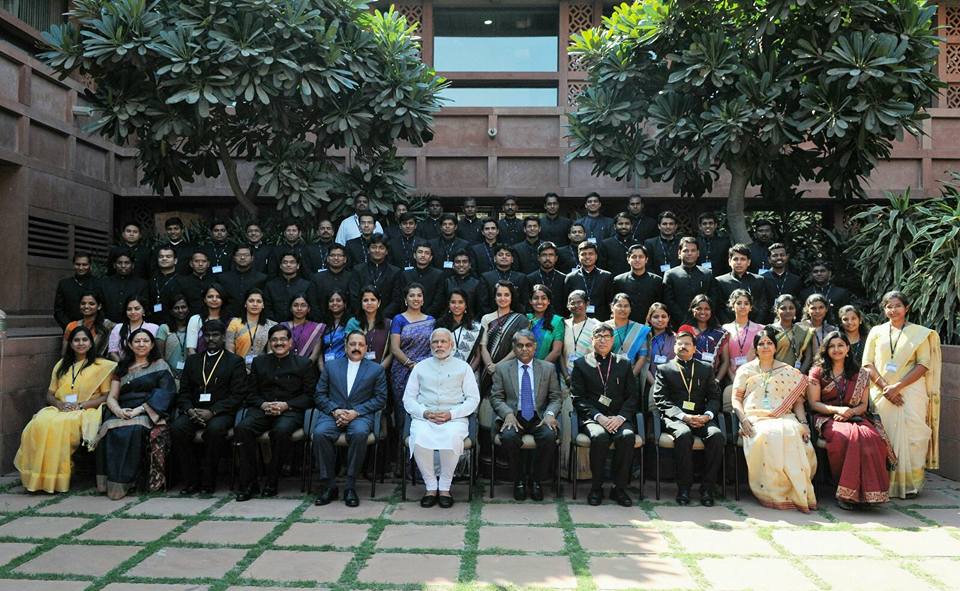Lateral Entry into Civil Service: 5 Pros & Cons You Need to Know About This Big Step!
The Centre is planning to induct 10 individuals from the private sector as joint secretaries through open recruitment, bypassing the famous UPSC exams. What is your view about this move? Let us know in the comments below!

The Centre has opened the highest echelons of the bureaucracy to skilled individuals from the private sector and academia, inviting applications for ten candidates at the level of joint secretary across various departments. Joint Secretaries play a crucial role in formulating and implementing policy.
Bypassing the UPSC exam, it will select ten ‘outstanding’ individuals for the post of Joint Secretary across the following departments—Revenue, Financial Services, Economic Affairs, Agriculture, Cooperation & Farmers’ Welfare, Road Transport & Highways, Shipping, Environment, Forests and Climate Change, New & Renewable Energy, Civil Aviation and Commerce.
Candidates can apply online from June 15 to July 30 (1700 IST). In its announcement, the government has set some general parameters for eligibility.
1) A minimum age limit for applications has been set at 40 as of July 1, 2018
2) Must be a graduate “from a recognised university/institute”.
3) Minimum of 15 years work-experience for those coming in from academia or private sector
These lateral entrants into the civil service will be offered a three-year contract, which the government can extend to five years depending on performance.
However, the highlight of this announcement is the salary these lateral entrants will receive — Rs 1,44,200 to 2,18,200 per month.
These are seemingly competitive salaries. Making matters better for potential candidates is that they shall be eligible for all government-mandated perks – for example, transport, accommodation and reimbursement of expenses.
Soon after coming to office, Prime Minister Narendra Modi held a meeting with top civil servants at the Centre seeking lateral entry of private sector professionals and academics at the joint secretary level.However, this was dropped with severe pushback from the IAS establishment.

In fact, even the first Administrative Reforms Commission (ARC) had also advocated the need for specialisation all the way back in 1965.
Pros of lateral entry:
1) The lack of specialisation across the top tier of Indian bureaucracy is a concern that has remained unaddressed until now.
2) IAS officers get recruited at a very early age via the UPSC exams. It is difficult to gauge their administrative judgement and capabilities then. Some may pass with flying colours, while others don’t make the cut even later on in their careers. Allowing for lateral entry of seasoned professionals and experts into the service makes up for this deficiency.
3) Career promotions in the IAS move along seamlessly with few impediments along the way. Attempts to introduce ‘meritocracy’ hasn’t quite worked out. Bringing in experts from the professional sphere is expected to shake the IAS out of their comfort zone.
4) This isn’t the first time that the government brought in professionals from the private sector or academia into the top tier of government. Take a look at the Finance Ministry, Reserve Bank of India and even the current NITI Aayog, which have hired the likes of Raghuram Rajan, Arvind Subramanian and Arvind Panagriya to name a few.
5) The IAS was designed for a time when the State was all-powerful. That reality somewhat changed with liberalisation in 1991, where the state was compelled to cede more space to markets. Therefore, it becomes more critical for the government to ascertain the impact its policy decisions have on various stakeholders such as the private sector, non-profits, and general public, i.e. those who have experienced government from the outside.
Concerns with lateral entry:
1) Lateral entrants from the private sector and academia may not work well with the bureaucracy. The same pretty much goes for any inter-sector scenario. Differences in work culture, turf wars and systemic inertia often come in the way.
2) It’s important to gauge what processes the Centre has put in place to ease the transition and establish authority. Candidates coming from the outside may not know the nuances of the system which can be exploited against them in any number of ways.
3) The IAS establishment is likely to baulk at lateral entrants who haven’t made it through probably the hardest open competitive exam in the world, but because of privilege and social networks.
4) One of the distinguishing aspects that the current crop of IAS officers can hold up is their experience in the field, serving some of the poorest districts in our hinterlands. Those entering from privileged backgrounds and the private sector may have never seen a village school.
“The lateral entrants should, therefore, have mandatory ‘district immersion’, serving at least five of their first ten years in field postings. The hard grind of such field postings will make lateral entry self-selecting, drawing in only those with commitment and aptitude,” note Gulzar Natarajan and Duvvuri Subbarao, both IAS officers who have served with the Anhdra Pradesh cadre, in a column for The Indian Express.
5) There are also concerns that the introduction of pro-establishment candidates through lateral entry at the position of joint secretary could stifle good civil servants who are resisting against something inadvisable that the government seeks to do.
How transparent is the selection process put forward by the Centre? Will they publish minutes of the selection process online? Without accountability, reform is merely an uncertain change. Coming from a good university and having 15 years of experience isn’t sufficient. If the rest is up to the selection committee’s discretion, then backroom dealings are possible.
Also Read: 10 IAS Officers Who Made 2017 Better With Their Brilliant Initiatives
Finally, any such reform must be complemented with other measures. For example, some have suggested that the worst performing civil servants must be eased out of service after 15 years based of course on criteria that is both transparent and accountable. This will open up space for lateral entrants as well, leaving the IAS a little less top heavy.
Yes, the Centre’s recent notification for lateral entry is a bold move, whose time has come. This move is long overdue. However, as the familiar refrain goes, the devil lies in the details.
Any new system will take time to evolve. So one can only hope that those at the top see this through till it becomes efficient and transparent and ensure a way to keep the public informed about it objectively.
(Edited By Vinayak Hegde)
Like this story? Or have something to share? Write to us: [email protected], or connect with us on Facebook and Twitter.
NEW: Click here to get positive news on WhatsApp!
This story made me
- 97
- 121
- 89
- 167
Tell Us More
We bring stories straight from the heart of India, to inspire millions and create a wave of impact. Our positive movement is growing bigger everyday, and we would love for you to join it.
Please contribute whatever you can, every little penny helps our team in bringing you more stories that support dreams and spread hope.



















